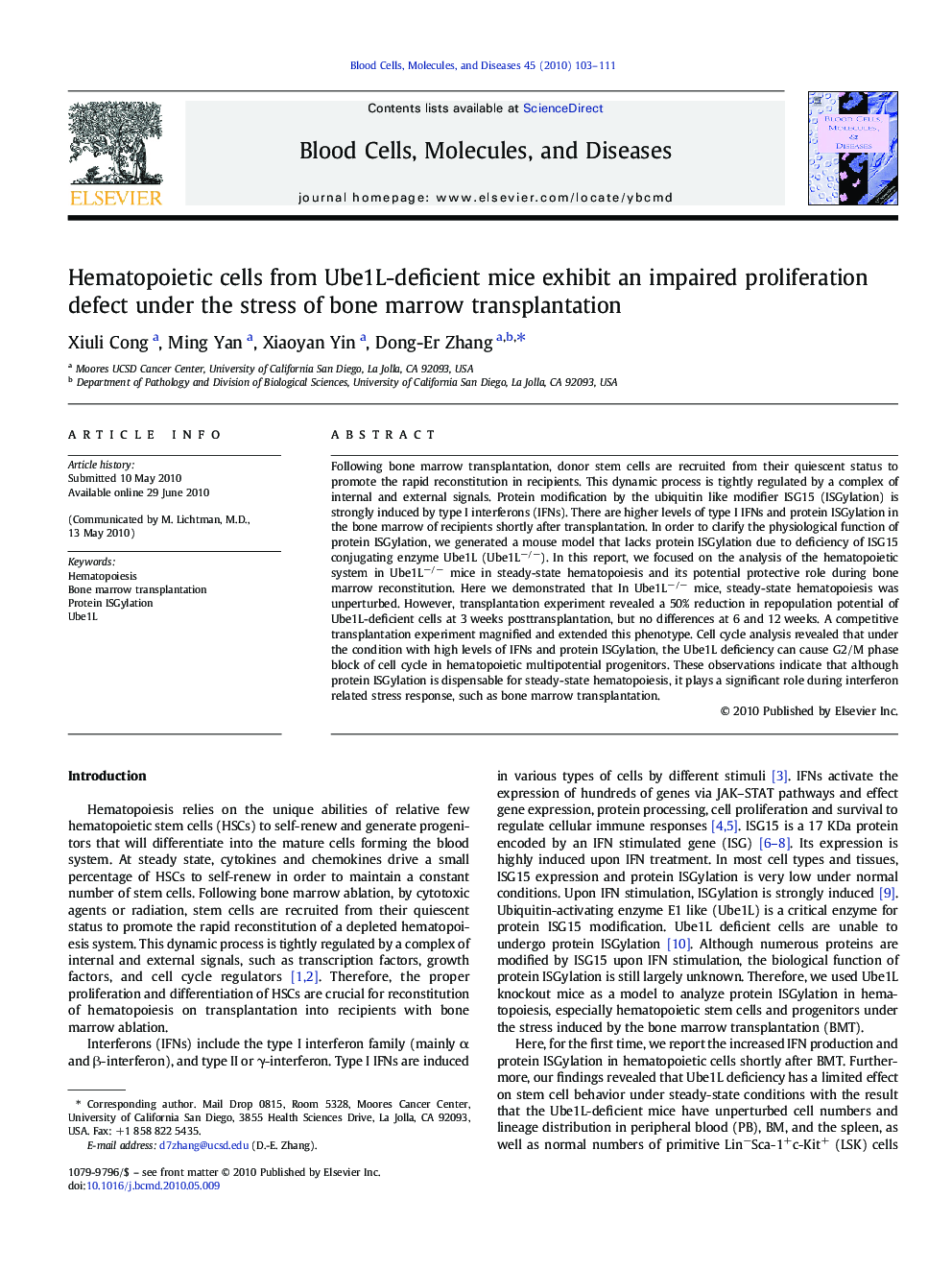| کد مقاله | کد نشریه | سال انتشار | مقاله انگلیسی | نسخه تمام متن |
|---|---|---|---|---|
| 2827525 | 1162450 | 2010 | 9 صفحه PDF | دانلود رایگان |

Following bone marrow transplantation, donor stem cells are recruited from their quiescent status to promote the rapid reconstitution in recipients. This dynamic process is tightly regulated by a complex of internal and external signals. Protein modification by the ubiquitin like modifier ISG15 (ISGylation) is strongly induced by type I interferons (IFNs). There are higher levels of type I IFNs and protein ISGylation in the bone marrow of recipients shortly after transplantation. In order to clarify the physiological function of protein ISGylation, we generated a mouse model that lacks protein ISGylation due to deficiency of ISG15 conjugating enzyme Ube1L (Ube1L−/−). In this report, we focused on the analysis of the hematopoietic system in Ube1L−/− mice in steady-state hematopoiesis and its potential protective role during bone marrow reconstitution. Here we demonstrated that In Ube1L−/− mice, steady-state hematopoiesis was unperturbed. However, transplantation experiment revealed a 50% reduction in repopulation potential of Ube1L-deficient cells at 3 weeks posttransplantation, but no differences at 6 and 12 weeks. A competitive transplantation experiment magnified and extended this phenotype. Cell cycle analysis revealed that under the condition with high levels of IFNs and protein ISGylation, the Ube1L deficiency can cause G2/M phase block of cell cycle in hematopoietic multipotential progenitors. These observations indicate that although protein ISGylation is dispensable for steady-state hematopoiesis, it plays a significant role during interferon related stress response, such as bone marrow transplantation.
Journal: Blood Cells, Molecules, and Diseases - Volume 45, Issue 2, 15 August 2010, Pages 103–111